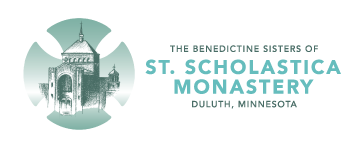by Sister Donna Schroeder
1 Samuel 16
Psalm 23
John 9:1-41
The readings for the 4th Sunday of Lent have a clear theme of light and sight. In the Hebrew Scripture, Samuel sees that David is the one chosen by the Lord. In Paul’s letter we are urged to live as children of light which produces every kind of good. And finally, in the Gospel, Jesus performs the astonishing cure of a man born blind.
Light is an important symbol in the Gospel of John. That is hardly surprising since light stands as a symbol of life. Light also stands for knowledge. We are enlightened when we understand something. We associate light with joy. There are those who brighten our lives by spreading joy among us.

The liturgy brings us the theme of light in many contexts drawn from Scripture. One phrase of the Lenten Response to the Gospel reading this evening is powerful: The fire of God’s love brought light into the world. These words fit perfectly with the Sunday readings as does tomorrow’s Gospel acclamation: I am the light of the world, says the Lord, whoever follows me will have the light of life. Light is a symbol of life, especially the life of the spirit. It is also bound to the word in many places in Scripture. For example, in Psalm 19 we read: Your word is a lamp to my feet and a light to my path.
The same themes are also obvious in the hymns with which we embellish our common prayer. This past week one of the verses we sang as a part of the Novena of St. Benedict reminded us of one of the notable experiences of St. Benedict. Saint Benedict in vision bright, in God’s inspiring wondrous light, you saw the world in one bright ray, the universe before you lay.
At this time of the year we become hungry for signs of life: budding trees, the first flowers of spring, courting birds, increasing light. If you check the Farmer’s Almanac you will find that the day length is increasing relatively rapidly, not just one or two minutes each day as just after the Winter solstice, but three or four minutes. If we have suffered from the onset of daylight-saving time, we have the solace of a reasonable increase in daylength. In just a few days the beginning time of our Morning Prayer has shifted from darkness to light.
Light is a rather challenging form of energy, in some circumstances behaving as particles we call photons but also as waves that differ in length to give us color. That dual aspect of light can remind us of realities we cannot fully understand. such as knowing Christ is both fully human and fully divine.
Darkness, the absence of light, is symbolic of death, sin, and sadness. Blindness, the inability to see, is often used in a metaphorical sense. If a person cannot recognize something apparent to us, we describe them as being blind. In today’s Gospel, the Pharisees failed to acknowledge the miraculous in the gift of sight coming to a man born blind. And why? Because the deed had been accomplished on the Sabbath. In their blindness they were only aware that a rule had been broken, rather than rejoicing that an amazing event had taken place. That failure may seem astonishing to us and yet we may not always recognize the miraculous in our own lives. When we see by the light that is the knowledge of Christ dwelling within us, the ordinary becomes extraordinary. The prophets were able to see what their peers could not. When Samuel recognized David as the one to be anointed, he was seeing by means of the light God had given him. When the psalmist proclaimed only goodness and kindness follow me all the days of my life, she was seeing by that light. When Peter, James and John saw the transfigured Christ with Moses and Elias, they were seeing by that light.
Consider our own circumstances. At present we have an increased opportunity to make the light of Christ visible by how we respond to the fear and isolation resulting from the pandemic. We are surrounded by community members, baptized women, consecrated women, each bearing the light of Christ. That is extraordinary. How often do we see it? Do we savor the color of it? Do we celebrate it? Does it energize us to make the fire of Christ’s love visible? We have an opportunity. I know that I need the good example that all of you provide for me. I need your prayers and your forgiveness. I need the staples of our life together, the rhythm of prayer and work, liturgy and lectio. My prayer is that all of us are able to recognize the Christ light among us and use it.

